The 29th edition of the Nimes Flamenco Festival just wrapped up and this would be the perfect moment for a global overview, if it weren’t for the fact that this is not the purpose of this article. It feels more appropriate to describe some of the best moments of these days, just half the festival, in this lovely French city.
Manuel Moraga
The nicest memory, without a doubt, is of seeing the theaters full, day after day, something that not only pleases the performers and the organization, but also this observer who once again takes note of the of box-office draw this art-form has outside Spain. Plenty of Spanish programmers would love to say the same thing, and not because their artistic line-ups are poor, but because in our country it’s still a problem getting audiences for flamenco.
With a full house, Leonor Leal presented Nocturno, a difficult work to sustain with only guitar, percussion and dance, in other words, without singing, but which Leonor was able to construct taking on a new stylistic language, much freer. Some of the most interesting landscapes came from the dialogues between dance and percussion, including exchanging roles: Leonor playing Antonio Moreno’s drums, or Antonio coming forward to take on a dramatic part of the work, beyond the music as such. Laidback talented touches that make the show all the better.
Encounters tended to generate great moments, and the one shared by Chicuelo and José Luis Montón was no exception. On stage, two magnificent guitarists, two tremendously creative personalities and two radically different musical worlds, in other words, all the elements for a perfect storm in the best sense of the word. Each one, on his own, defended his own compositions, but the two pieces they interpreted together to close the show were unforgettable. Two pieces of Chicuelo’s that Montón worked to double them up for two guitars: common landscapes, complementary landscapes, criss-crossing melodies, harmonies that open up worlds of color, space for improvisation… Two genuine musical jewels which these gentlemen of the guitar regaled us with at the end of their respective recitals.
Also brilliant was Dani de Morón’s recital, one of the most interesting guitarists of our time, and with a great future ahead of him. Dani has managed to create his own style which is absolutely recognizable. Nothing is lacking. He’s got technique, strength, an extraordinary sense of rhythm, and above all, a tremendously original expressive world. He came to Nimes to present his recent recording (titled “21”) in which a good number of great singers participate, and on this occasion two of them accompanied him: Jesús Méndez and Duquende, in addition to the Mellis. As we said, it’s hard to pick out an especially good moment of this recital so full of energy, but perhaps we could cite the two bulerías in which both guest singers participated: two diametrically opposed gypsy voices, as far as aesthetics, but equally expressive from the heart, supported and even encouraged by the creative tension of Dani de Morón. A performance that cannot easily be forgotten.
The following day Arcángel presented Tablao at the Bernadette Lafont theater, in other words, he attracted more than 1000 people for a show conceived to recreate flamenco in that intimate space which is a flamenco tablao. That was the challenge since it was the first time he did it, as the singer himself admitted, and the result was more than noteworthy. The fandango facing-off, the classic rumba moment, or the sevillanas moment, or the solemn brave song accompanied only by a guitar…all those scenes that were the day-to-day goings-on of these historic flamenco venues were reflected in this production. To single out a few moments, I would say the magnificent soleá forms interpreted by Arcángel that had a very retro feel, backed up by snappy rhythm, like the old slate recordings, and also the Bambino rumba interpreted by Vicente Redondo El Pecas, with all the grace and drama paradoxically required by these very personal styles.
It would also be hard to single out moments of María Terremoto’s performance, a still very young singer but one who has been in the profession for some time, with everything that goes along with that about knowing how to be on stage, having a presence, pulling up the necessary courage to overcome various problems, which there were, etc. Perhaps the second part of her recital, with her voice warmed up, she was more moving, and we might point out the bulería por soleá and the bulerías, the latter with dance included. Difficult forms that María pulled off not only credibly, but actually outstanding in her search for nuances.
Ana Morales brought Sin Permiso to the theater, a very personal work inspired in her father. With a carefully crafted script and a good sense of compact theater in which the value of each scene depends on the preceding one, and the one that follows, I would single out a more generic aspect such as the dancer’s bravery in seeking out new idioms. That path allows her to develop her expressive potential and show herself to the audience with full command and knowledge. Sin Permiso is quite a lesion in dance without hang-ups.
In this run-down of high points of the Festival de Nimes, we can’t help but mention those of the city itself, with its wonderful cultural offering, its urban attraction and the cuisine. Also, the close ties of the inhabitants with our country of Spain. Thousands of Spaniards crossed the border fleeing from the Civil War and its terrible aftermath, or from the precarious post-war life, and set down roots in this welcoming land. Most of the citizens of this city have some kind of family link with Spain and you can almost get by without speaking in French in the daily life of Nimes. The kindness of the people also brought some very good moments of interchange and enrichment.
Next year will be a great challenge for the Nimes Festival Flamenco since it will be the event’s 30th anniversary. Three decades presenting the best of our flamenco production without, I repeat, any kind of hang-ups or limitations: from the most classic flamenco to the most avant-garde tendencies. That’s how flamenco is, and that’s how this Festival serves it up.
Photos: Sandy Korzekwa



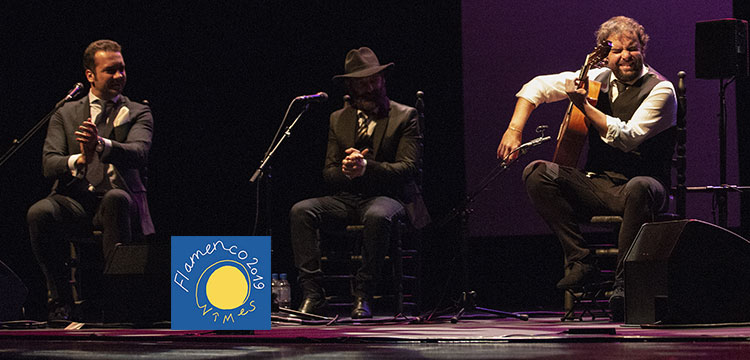






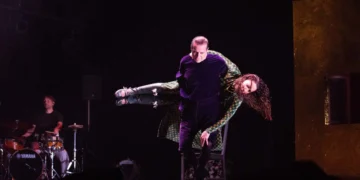
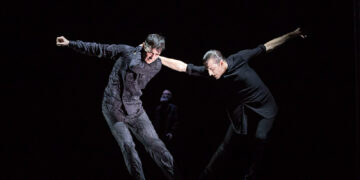
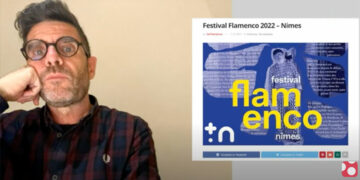

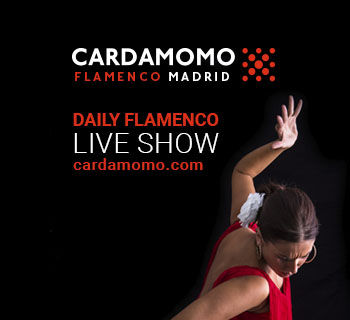
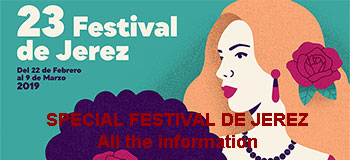
You must be logged in to post a comment.